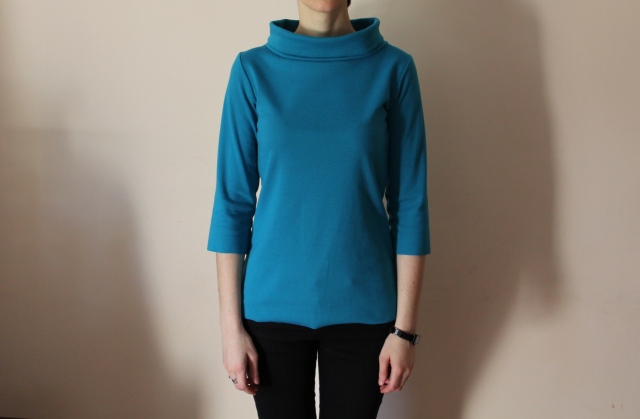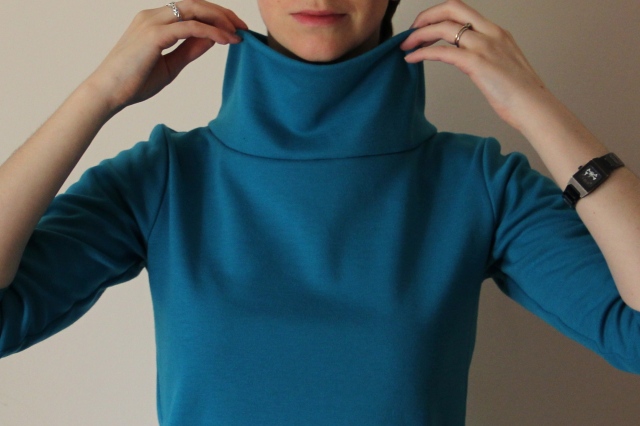This post is a bit shorter than usual – I’ve made this Tilly and the Buttons pattern so many times already that I’ll just keep to what’s different about this one!
I discovered a distinct lack of tops in my handmade wardrobe when participating in Me Made May earlier this year and have been trying to concentrate on sewing more of them. One of the first ones I made to rectify the top-skirt ratio imbalance was a red ponte Coco with a wide collar (I’ve found the pattern piece makes a collar that is very narrow for doubling over). I wore it a lot throughout spring and I’ve really wanted to make another one, so when I spotted some lovely turquoise ponte in The Cloth Shop (Dublin), I bought just enough to squeeze out a three-quarter sleeve Coco with collar.
I wanted this top to be slightly more fitted around the waist than the red ponte one had been, so I brought in the cutting line a bit instead of flaring it out so much. It’s a lovely cosy top and I managed to get one or two wears in before leaving for Shanghai. (Unfortunately in these photos I’m wearing a more-than-usually-padded bra so the fitting looks bit tighter around the bust than usual.)
I bought several McCalls, New Look and Simplicity patterns in online sales before leaving Ireland and now have a few new knit patterns to try out before revisiting Coco for an eighth time, but I don’t see myself going through winter without making one or two more!
Which patterns have become your go-to classics for wardrobe staples? I’m always on the lookout for well-loved patterns I haven’t tried yet!




















